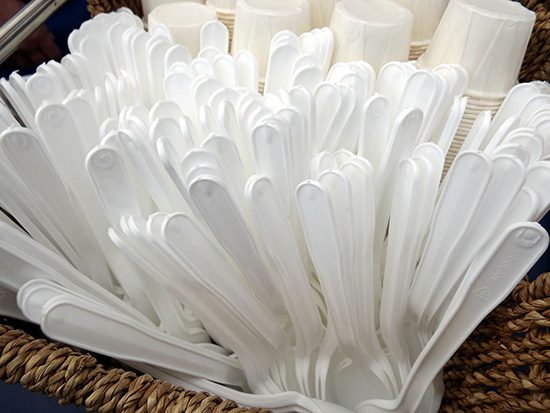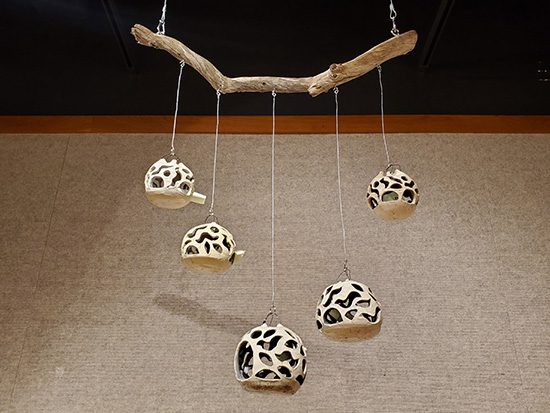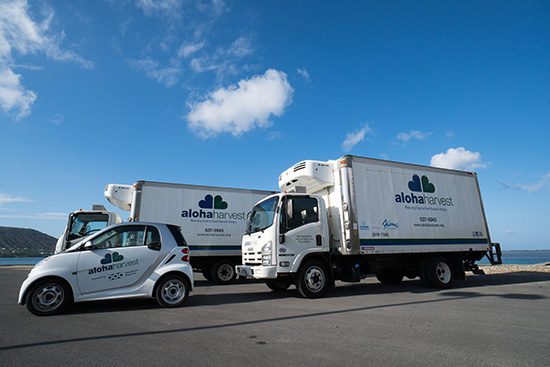
In the middle of Kāne‘ohe Bay lies the island of Moku o Lo’e also known as Coconut Island. From an ancient Hawaiian fishing village to a fantasy for the rich and famous to a retreat for weary soldiers and now a world-class marine biology facility, this little island has a rich and colorful past.
For those familiar with the back roads of Kāne‘ohe, Moku o Lo’e sits off Lilipuna Road directly across from Kāne‘ohe Marine Corps Air Station and can be seen from many viewpoints around the bay. I was born and raised in Kāne‘ohe and never knew the true story and history of the island–until now.
Educator and marine biologist Kyla Herrmann from the Hawai‘i Institute of Marine Biology (HIMB) gave me a tour of the island recently. My vision of Gilligan’s Island, the popular sitcom of the 1960s and 1970s, vanished as she introduced me to the real Moku o Loʻe. (The TV show actually did use Coconut Island in its opening shots.)
Premier research facility
Run by the University of Hawai‘i, HIMB is the premier marine biology research facility in the Pacific. Its mission is to conduct, promote and support research and training in tropical marine biology. As such, it is a world leader in research aimed at understanding and conserving tropical marine ecosystems. It is also the site of important studies that are helping to understand the current impacts of climate change.

For instance, Herrmann mentioned the ongoing study started by the late Dr. Ruth Gates on the assisted evolution of the resilient corals in the bay as well as the work in the Mary Hagadorn lab involving coral banking and cryogenically freezing coral gametes and then using lasers to re-animate them.
“There’s fish genetics, shark tagging and everything you can think of from the tiniest microbes to the largest charismatic mega-fauna,” Herrmann said. “(We are) trying to research, restore, preserve for our future. These are just a few of the many projects that happen here seven days a week.”
Marine biologist and lab researcher Jan Vicente, who has been working on Moku o Loʻe for two years, added, “We have people working on sharks, corals, sponges, fish larvae and basically anything that lives in the ocean. We all work together really well to answer the same questions but with different organisms.”

Dr. Philip Heilfrich and Dr. Robert Hiatt collaborated in 1953 to start the marine lab, which later became known as HIMB. Heilfrich, who spent 44 years associated with Coconut Island, came to Hawai‘i after seeing an ad for a graduate student position at the University of Hawai‘i. He began as a researcher and subsequently became acting director of the lab.
From 1975 to 1977, he took a short leave to help found the World Fish Center sponsored by the Rockefeller Foundation, which helped people with fishery problems in developing worlds. He returned to UH and was offered the position of dean of research for four years. Then in 1980, he took over as director of HIMB. After retiring in 1993, he stayed around to help build a new marine laboratory.
When asked about his most memorable moments on Coconut Island, Helfrich spoke of Edwin Pauley and his family, philanthropists who helped turn the small island into the important research facility it is today.

“Every year, the Pauleys would have a big gathering on the island, and I will never forget bringing my wife to the island. It was a treat for both of us. We felt very honored and grateful to be allowed on the ‘Forbidden Island.’ The Pauleys were very hospitable to us and made us feel very welcomed. They were great!”
Edwin Pauley’s influence and vision
Edwin Pauley was a charismatic man of many talents. He was an educator, diplomat and successful industrialist who gained his wealth in oil in the Los Angeles area in the early 1920s and then became a pivotal lobbyist to the Democratic Party during World War II. He was an important member of President Franklin Roosevelt’s administration and subsequently a diplomat during Harry Truman’s presidency. As an economic adviser, he was involved in the Potsdam Conference with Truman, British prime minister Winston Churchill and Soviet foreign minister Vyachselav Molotov.
After the defeat of Germany and Japan, he was sent to Japan by President Truman to take inventory of the looted treasures, monies and gold that the Japanese government had accrued during the war. It was on his trip to the far east in 1945 that Pauley saw Coconut Island for the first time through the window of his plane as it was landing at Kāne‘ohe Marine Corps Air Station. The island lay just below the final approach to the runway.
In 1946, Pauley and a group of investors purchased Moku o Lo’e from the Holmes Estate for $250,000. The group came together to buy the island with the intent to turn it into a respite for battle-weary military personnel on the mend and later a resort club for the elite.
This was the start of many visits by dignitaries and politicians to the island. At one time, there was a Governors’ Convention held in Honolulu, and all 50 state governors were guests on the island. Among other notable visitors to the island over the years were Presidents Roosevelt, Truman and Johnson, General Douglas MacArthur and Hollywood actors such as Clark Gable, Shirley Temple and even John Wayne, who starred in the 1940s movie Wake of the Red Witch which was filmed there.
However, for all the glamour and grandiose of those who visited Moku o Lo’e, there is much history that preceded the modern era of the island.
Pre-contact Hawai‘i
The earliest known history of Moku o Lo’e goes back to pre-contact Hawai‘i. In 1650, O’ahu was ruled by a chiefess named Kalaimanuia. Upon her death, the island was partitioned into quarters, and her three sons and daughter fought for dominance over the island. The eldest son was killed and his brother Kaihikapu-a Manuia took over the eastern half of O’ahu including Ko’olaupoko. He was succeeded by a son, Kākuhihewa, who resided in Kailua and set out to reunify O’ahu.
During this period, windward O’ahu flourished with the many fishponds and lo’i of Kawainui, Kaʻelepulu and Hamakua in Kailua and Paepae o He’eia and Waikalua Loko I’a in Kāne‘ohe. The oral histories of Kākuhihewa speak of a golden age in Ko’olaupoko with an abundance of fish and kalo.
In the late 17th century, Kākuhihewa’s great-great grandson Kuali’i came to power and reunified the island. His home and power base were at Ko’olaupoko, and he also gained influence on the island of Kaua’i.
Cultural interpreter and member of the Ko‘olaupoko Hawaiian Civic Club Mahealani Cypher related an anecdote that supports this history.
“According to a member of the Robert Manu Gay family from Kaua’i, they are descendants of an ali’i who once lived on Moku o Lo’e with his family. The man said the island was much larger at that time. The chief was the ali’i for Ko’olaupoko and could see nine of the 11 ahupua’a from his home on the island. There are burials on the island, some of which have been uncovered by construction of a fire protection pipeline in recent years.”
The Kingdom of Hawai‘i
By the 1780s, the Maui king Kahekili II had taken over O’ahu and made Kailua his home base, making the tiny island of Moku o Lo’e close to the political center of the island. With the coming of foreigners after 1778, the capital of the island shifted to the leeward side as the large European and American ships could be berthed in the natural harbor of Kou (later changed to Honolulu) as Kāne‘ohe Bay was too shallow.
Kahekili II was succeeded in 1794 by Kalanikupule, who was defeated by Kamehameha the Great at the battle of Nu‘uanu in 1795. By 1810, Kamehameha had unified all of the Hawaiian Islands.
Kamehameha focused his rule not on the abundance of the land but on the foreign trade activity happening around Honolulu. He distributed lands to his favorite chiefs and retainers, and 50 years later his son, Kamehameha III, redistributed the land in the Great Mahele of 1848. During the time of Kamehameha I, Ko’olaupoko, including Kailua and Kāne’ohe, were awarded to Queen Kalama who would own the land outright.
From the times of Kamehameha II (1819-1824), the control of Moku o Lo’e was under Abner Paki, the konohiki (a head of a Hawaiian land division who also controls fishing rights in adjacent waters) of the ahupua’a called He’eia. He married a granddaughter of Kamehameha I, Laura Konia. They had one daughter, Bernice Pauahi, and adopted Lydia Kamaka’eha (who would later become Queen Lili’uokalani).
In 1858, after Paki’s death, Princess Pauahi inherited the ancestral lands of He’eia that included Moku o Lo’e. In 1866, she leased 2,500 acres to John McKeague to establish the He’eia Sugar Plantation Company. The provisions granted the company konohiki rights to fisheries and seas around He’eia.
It was in 1883 that Princess Pauahi planted the first grove of coconut palms on Moku o Lo’e. During this period, Moku o Lo’e was used as a way station and lookout for fishing. In 1884, Pauahi died, leaving her patrimonial estate to her husband Charles Bishop.
In 1885, the He’eia Sugar Plantation foreclosed, and Marcus Colburn leased Moku o Lo’e from Charles Bishop with the condition that he took care of the coconut trees that were growing on the island. It was noted that lantana and guava were also growing on the island at that time.
An island in transition
In 1908, rancher James Bicknell Castle was granted a 40-year lease of He’eia, which included Moku o Lo’e. He introduced 50 to 60 sheep on the island in an attempt to clear it of the lantana shrubs. However, rats attacked the sheep, and the flock jumped into the sea and swam back to the shore of He’eia.
A family of Filipino immigrants inhabited the island in the late 1910s to the early 1920s. Faustino Olavides, his wife Portenciana and their daughters Ruth and Rose were the only ones on the island during that time.
From 1921 to 1925, German immigrant Paul Beyer and his wife Amelia sub-leased Moku o Lo’e in connection with a fishing company he co-owned. They and their seven children lived in a small plantation style house with a tarp-covered lanai. The family maintained a well on the island that was augmented with a rain catchment system.
After the Beyer family left the island, it was mostly uninhabited for years, becoming a rat-infested jungle of coconut trees, guava, lantana and mangrove.
There were numerous claims of ownership and challenges of title to the island over the years, but in the end, the Land Court decreed that the Bishop Estate had shown evidence of uninterrupted possession from the time of the Great Mahele. In 1937, the Bishop Estate eventually sold the island for $50,000 to Christian Holmes II, the heir of the Fleischmann’s Yeast and Gin companies.
Fantasy island
Holmes was a multi-millionaire from Cincinnati, Ohio, who had a dream to make his own fantasy island. He proceeded to transform the tropical jungle island into one of the world’s most spectacular private residences and invested over $1 million in its development.
He put in a four-inch pipe between the tiny island and O’ahu for freshwater from the Ko’olau mountains. He also established a telephone cable from the island to O‘ahu. He enlarged the island, built ponds, harbors and a seawall surrounding the island. He added more coconut palms to the ones Princess Pauahi had planted, giving rise to the island’s popular name of Coconut Island.
Holmes bought a four-masted schooner in Samoa, the Seth Parker, and had it sailed north to Hawai‘i. It leaked so much on the trip that it was declared unseaworthy. He permanently moved the Seth Parker to Coconut Island and transformed it into a movie theater. As a young boy growing up in Kāne‘ohe, I have a vivid memory of the ship as it sat moored on Coconut Island.
Holmes built outdoor bars at various points around the island. He added a bowling alley and reconstructed a shooting gallery on the island that he had bought at an amusement park in San Francisco. A tennis court was put in as well as a one-acre salt water pool that famed surfer and Olympian Duke Kahanamoku swam in.
That’s not all. Coconut Island even housed a small zoo for a short time. Animal residents included donkeys, monkeys, a giraffe and a baby elephant. Upon Holmes’s death, these animals became the basis for the Honolulu Zoo (along with the Honolulu Bird Park at the Kapiʻolani Park site).
Holmes threw lavish parties and entertained many celebrities and politicians alike. Cypher said that her grandparents were guests at many of those parties.
However, the gala era of Moku o Lo‘e ended with the attack by the Japanese on the Kāne‘ohe Marine Corps Air Station and Pearl Harbor. It was after World War II that philanthropist Edwin Pauley picked up from where Holmes left off.
The island today
When asked to share more of her thoughts on Moku o Lo’e, Cypher said: “We have found that the island has powerful mana, a spirit that is calming and healing. We have held cultural retreats at Moku o Lo’e, and this has helped us to focus our minds and hearts on our work. We consider the island ‘kapu’ (forbidden or restricted) for the research that is being done, primarily as long as this research is for the benefit of our marine resources and our people. That would be our primary condition on the continued use of this island for the future. We believe that cultural use of the island can co-exist with the scientific research, if managed wisely.”
Today, the island is stewarded by the University of Hawai’i and continues to be a world class marine biology research center. With its remarkable story and historic past, Moku o Lo’e truly remains a hidden but not forgotten gem in the Pacific.
History, dates and information gathered from Moku o Lo’e, A History of Coconut Island by Christian Klieger and published by Bishop Museum Press (2007).
by Ian Jenss, Ka ‘Ohana Editor in Chief





